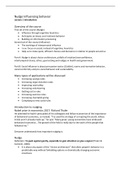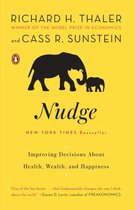Class notes
Summary lectures Nudge: influencing behavior Vu Amsterdam
- Course
- Institution
- Book
This summary of the course Nudge: Influencing Behavior within the Minor Understanding and Influencing Decisions in Business & Society contains all the material of the lectures that have been discussed. This also largely includes the material from the book by Richard & Thaler and Robert. B. Cialdini...
[Show more]





